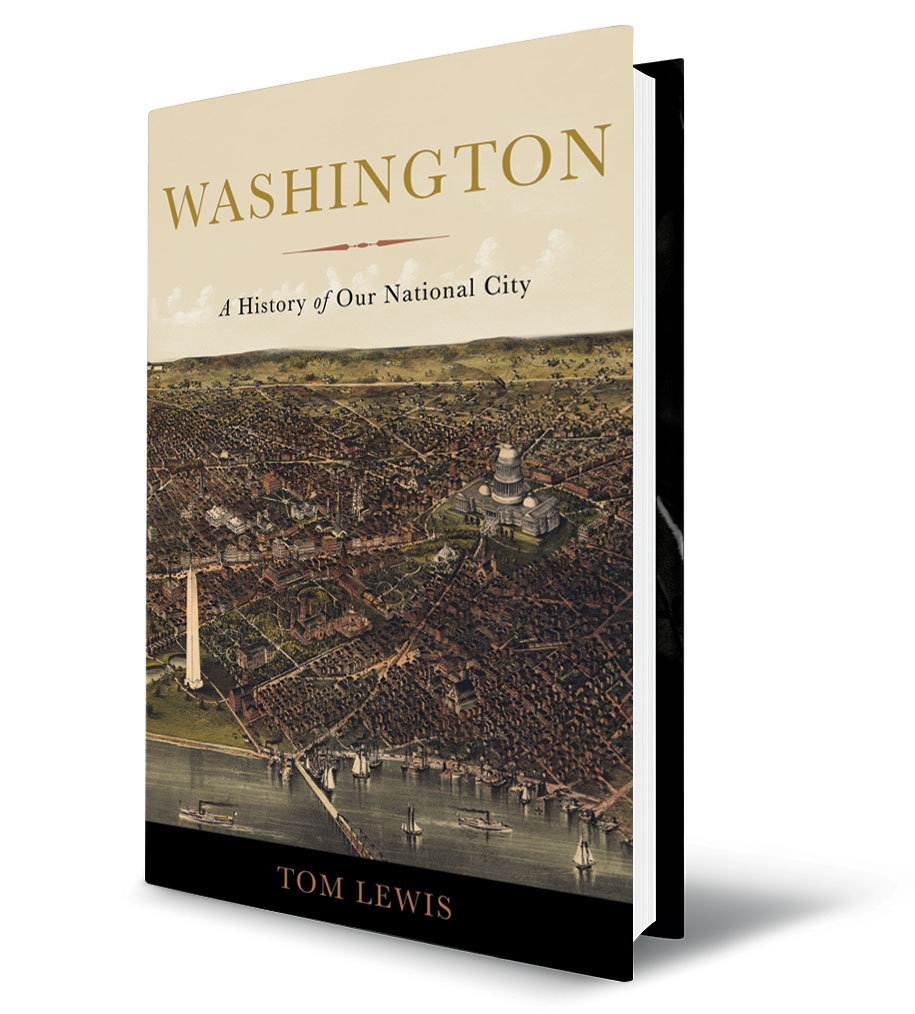Tom Lewis first took up Washington’s cause as a high-schooler in the 1950s, when he pushed his history teacher to answer why DC residents (then) had no vote. Now an emeritus professor of English at Skidmore College in Saratoga Springs, New York, Lewis has written Washington: A History of Our National City, which traces the anti-democratic history of the capital of the world’s biggest democracy. Washingtonian’s Paul O’Donnell talked with Lewis about the book.
You say you wrote this book for outsiders, to show how the District’s history is also every American’s history. But your research led you to a lot of local lore.
I went through the John Van Ness papers at the New York Historical Society. I’d try to alert the librarians there: “You’ve got a document here signed by James Madison, the blotting sand still on the paper.” During the War of 1812, Van Ness, who commanded the local militia, kept pleading with the Secretary of War, saying, “This city is vulnerable.” He was told that nobody was going to invade Washington.
But I had to practice historical triage—I had to toss out 90 percent to get my story of Washington.
That story is often about race.
Washington has been driven by race from the very beginning. It’s why the capital is where it is. Southerners didn’t want the seat of government to be in Philadelphia because of Pennsylvania’s strict rules about slavery—any slave brought into the state would be freed after six months.
The purest way to get to Washington as a politician is to hate it, to show you can control “them.” When he ran for President, Richard Nixon called Washington “the crime capital of the world” and said he’d bring order. Today Ted Cruz talks about “sending them a message.” He’s talking about Washington’s dysfunction, but also this alien place where the people are inferior. This scores votes, but it’s awful politics.
You write about how Congress makes mis-chief in DC to make points in members’ home districts. Do you have a favorite example?
Washington had Prohibition before the rest of America. Why was that? Did Washington want it? It was for Congress. They drove the social life, the German-American beer gardens, out of Washington.
But Congress has al-ways treated the city as the stepchild of democracy. Even now, Washington has the status of a high-school student council: When it comes to making decisions on the theme of the prom, if it gets too risqué, Congress says no.
Yet you say Washington has been able to fashion a better city through “community revolution.” What were the elements of that revolution?
The city’s separate communities were initially brought together out of unhappiness over the federal government’s push in the 1970s for inner-city highways. Ultimately, Washington got a subway out of that resistance, which provided an enormous economic engine, especially when it got to Shaw in the early 1990s.
But that revolution is still going on. Washington hasn’t had much practice in self-government. Democracy is a very messy business, and in some ways Washingtonians are still learning their democracy.
The District has managed to push back at American history. I learned that George Washington stayed for a second term in part to make sure architect Pierre L’Enfant got to finish his city.
George Washington cared passionately for this city. His last letter, written December 8, 1799, says how the people of Washington have put him through a trial. Thomas Jefferson said 1,500 acres would do just fine for the federal town, 300 for the federal buildings. George Washington went out and got L’Enfant. As President, he had a greater vision for the city, in fact, than it ever achieved.














